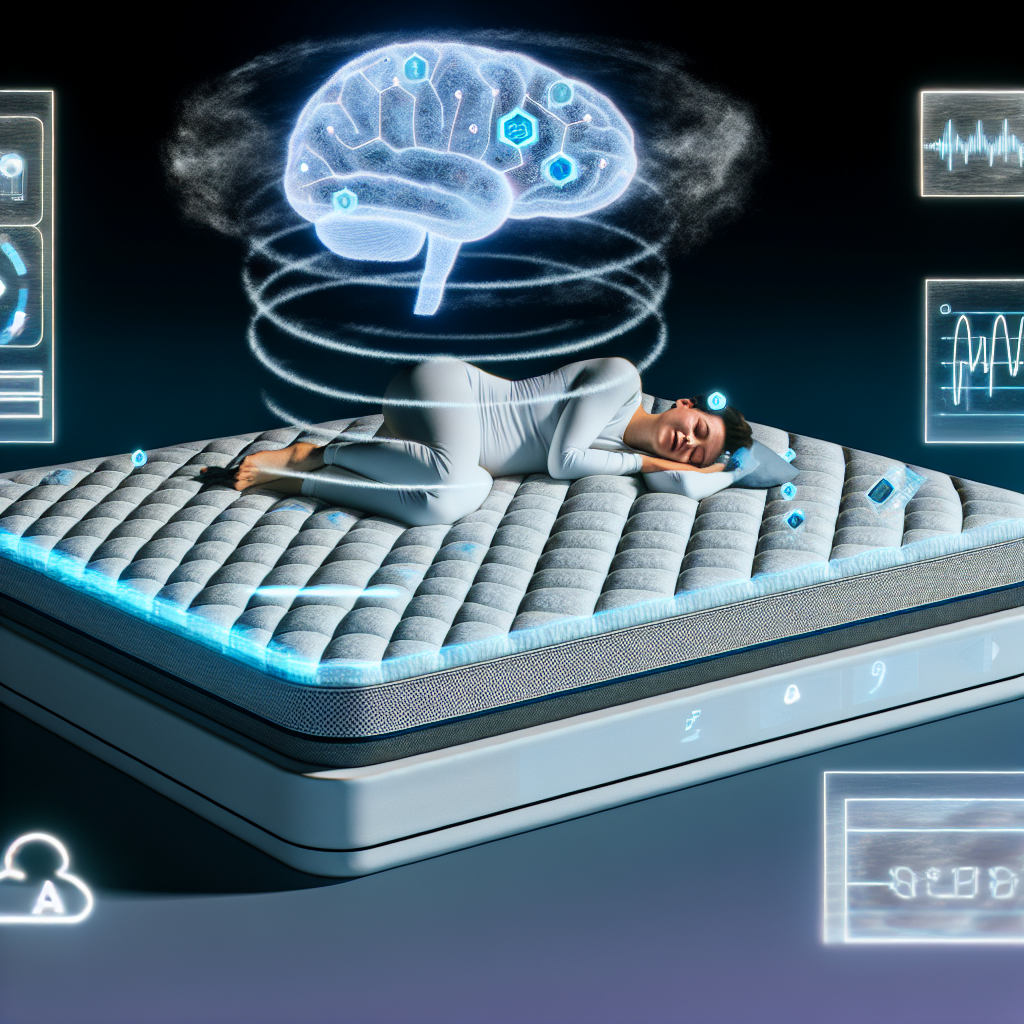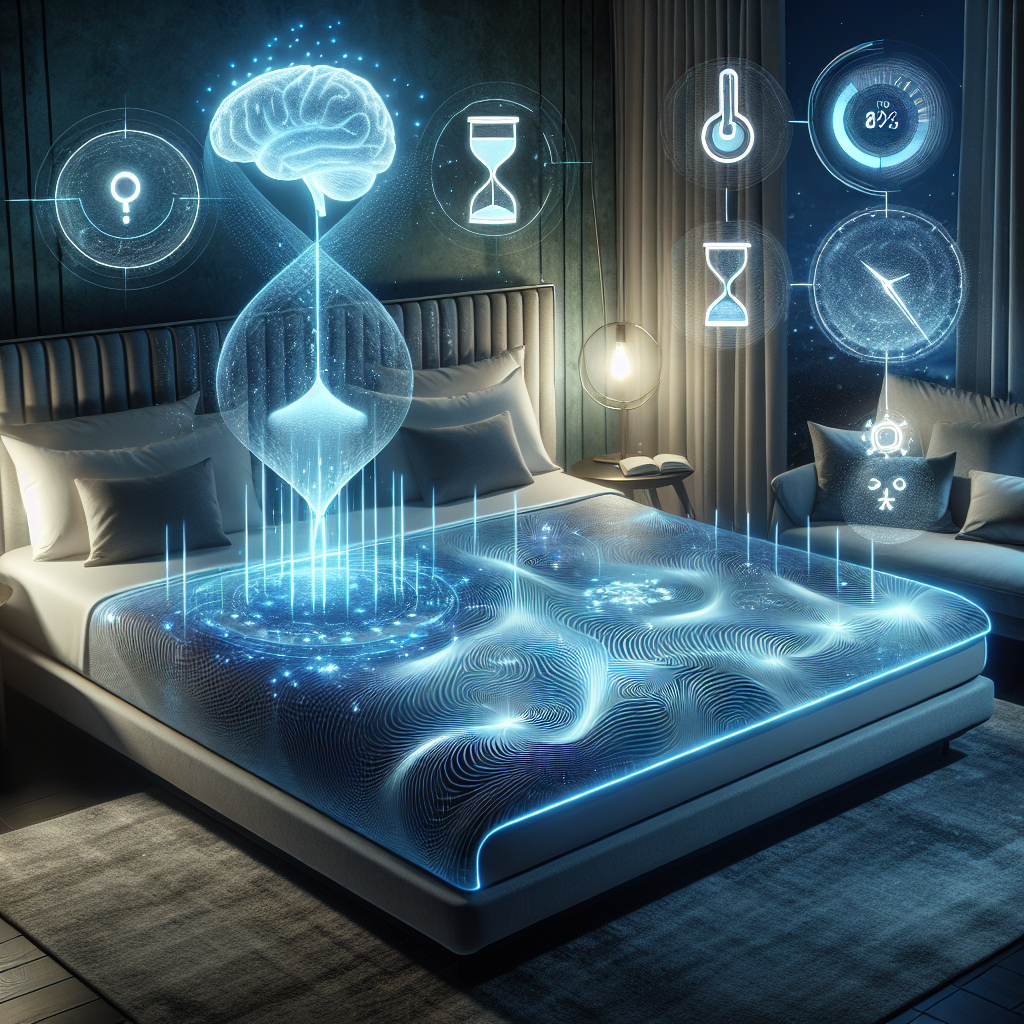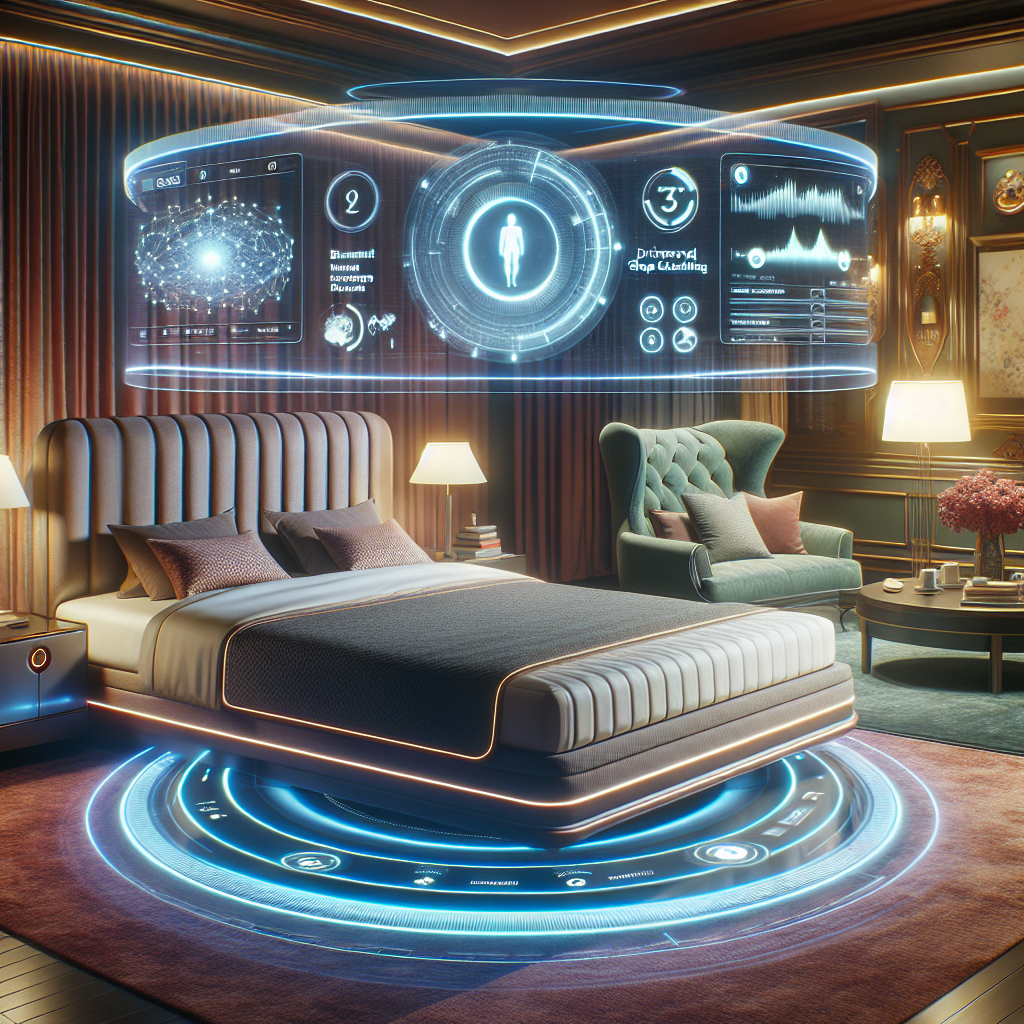Neural Sleep Optimization: How EEG-Guided Mattresses Personalize Brainwave Support
The Future of Personalized Sleep
The science of sleep has evolved rapidly in recent years, revealing just how crucial deep, restorative rest is for memory consolidation, emotional regulation, and overall health. Although sleep hygiene, such as reducing blue light exposure and maintaining a consistent sleep schedule, plays a critical role, cutting-edge technology is now offering a way to tailor sleep solutions to individual brainwave activity through EEG-guided mattresses.
EEG (electroencephalography) technology, which has long been used in sleep research to analyze brainwave patterns, is now being implemented in mattress designs to enhance sleep quality. These smart mattresses use embedded EEG sensors to measure brain activity in real-time and adjust their support system accordingly. By doing so, they aim to optimize sleep architecture, ensuring that users spend more time in deep sleep (slow-wave sleep) and REM sleep, the most restorative cycles of the sleep process.
Traditional mattresses rely on static materials like memory foam or hybrid coil layers to provide comfort and support, but these one-size-fits-all approaches fail to address individual needs. EEG-guided sleep systems, on the other hand, continually adapt to each sleeper’s brain signals, body pressure, and sleep position. This dynamic response helps minimize sleep disruptions caused by discomfort, misalignment, or sleep disorders such as insomnia and restless leg syndrome.
For individuals struggling with chronic sleep issues, EEG-guided mattresses offer an innovative solution backed by neuroscience. By monitoring brainwave patterns, these mattresses can detect when the sleeper begins to exit deep sleep too early, triggering an automated adjustment in surface firmness, temperature control, or even subtle vibration to encourage the body back into restful slumber. This real-time, personalized intervention provides a more efficient pathway to healthy sleep cycles tailored to individual needs.
With sleep disorders on the rise worldwide—impacting not only energy levels but also long-term health conditions like cardiovascular disease, diabetes, and cognitive decline—advancements in EEG-based sleep technology hold immense promise for revolutionizing sleep optimization.
How EEG-Guided Mattresses Work: A High-Tech Sleep Solution
Neuroscientific research has long confirmed the role of brainwave activity in dictating sleep quality. Sleep consists of non-REM (light and deep sleep stages) and REM (rapid eye movement) sleep cycles, and disruptions in these stages can lead to poor cognitive function, mood disorders, and immune dysfunction.
EEG-guided mattresses feature embedded sensors that monitor the sleeper’s brainwave activity, body movement, and physiological signals. Using AI-driven algorithms, the mattress analyzes EEG data in real-time and adjusts its settings accordingly to maintain optimal sleep conditions. These adjustments can include:
– Firmness Modulation – The mattress dynamically adjusts its firmness level based on sleep stage, ensuring proper spinal support during deeper sleep phases.
– Temperature Control – By detecting fluctuations in sleep cycles, the mattress regulates temperature to prevent overheating, a common cause of sleep disturbances.
– Gentle Sleep Stimulation – Subtle vibrations or sound-wave stimulation may be used to reinforce slow-wave sleep, prolonging deep sleep periods for maximum restoration.
These smart sleep surfaces actively help regulate sleep cycles and minimize premature awakenings, dramatically improving sleep efficiency and overall restoration.
The Science Behind EEG-Guided Sleep Optimization
Enhancing Deep Sleep with Smart Technology
A pivotal study from the National Institutes of Health (NIH) demonstrated that precisely modulated brainwave stimulation enhances slow-wave sleep, the most restorative phase of sleep known for improving memory and physical recovery (NIH Study). This supports the fundamental mechanism behind EEG-guided mattresses, which optimize sleep by detecting and influencing neural activity in real time.
Neuroprotection and Cognitive Health
Research published in the journal Nature Neuroscience highlights how slow-wave sleep (SWS) plays a critical role in preventing neurodegenerative conditions such as Alzheimer’s disease (Nature Neuroscience).
Since EEG-guided mattresses help extend slow-wave sleep duration, they could act as a preventive tool against cognitive decline by actively enhancing neural synchronization via responsive adjustments.
Reducing Sleep Disturbances and Improving Sleep Quality
Clinical trials by the American Academy of Sleep Medicine (AASM) explored how biofeedback from EEG devices improved sleep maintenance and reduced nighttime awakenings. The study found that individuals using real-time EEG sleep interventions experienced an increase in deep sleep by up to 25% compared to those using conventional mattresses (AASM Study).
AI and EEG: A Non-Invasive Solution for Sleep Disorders
Beyond sleep optimization, research in AI-driven sleep medicine suggests that biometric assessment tools—such as EEG sensors in mattresses—could offer non-invasive sleep disorder management without the need for pharmacological interventions.
This could significantly benefit insomnia patients or those with obstructive sleep apnea (OSA), as personalized data-driven interventions reduce the need for medication while addressing root causes of poor sleep (Journal of Clinical Sleep Medicine).
These findings suggest that EEG-integrated sleep solutions can directly and dynamically enhance brainwave coherence, regulate sleep cycles, and improve long-term sleep health.
Why EEG-Guided Mattresses Are the Future of Sleep Optimization
The development of EEG-guided mattresses represents a significant leap forward in sleep science, transforming passive sleep surfaces into active, responsive sleep optimization tools. By leveraging neurotechnology, these smart mattresses adapt to an individual’s brainwave activity, helping to prolong deep sleep and prevent premature wakefulness, a feat that traditional mattresses cannot achieve.
Scientific research strongly supports the role of EEG-driven sleep adjustments in promoting better sleep architecture, enhancing slow-wave sleep, and even reducing risks associated with neurodegenerative diseases. With sleep health being directly linked to mental clarity, emotional stability, and physical well-being, adopting EEG-integrated sleep technology could be a vital step toward long-term health improvements.
As EEG-guided mattresses continue to evolve, they may become the gold standard in personalized sleep health, offering tailored rest and recovery that naturally aligns with individual brain activity. For those prioritizing sleep optimization, investing in neuroscience-backed, real-time adaptive sleep solutions could mean the difference between restless nights and true, restorative slumber.
Summary:
EEG-guided mattresses represent a significant advancement in sleep technology, leveraging neuroscience to personalize sleep solutions. By monitoring brainwave activity in real-time, these smart mattresses can dynamically adjust factors like firmness, temperature, and gentle stimulation to optimize sleep architecture and promote restorative deep sleep. With growing research highlighting the cognitive and health benefits of enhanced slow-wave sleep, EEG-integrated sleep systems offer a promising pathway to revolutionizing sleep optimization and improving long-term well-being.
References:
1. National Institutes of Health (NIH) – Stimulation of Brain Waves Improves Sleep
2. Nature Neuroscience – Slow-Wave Sleep & Neuroprotection
3. American Academy of Sleep Medicine (AASM) – Real-Time EEG Sleep Interventions
4. Journal of Clinical Sleep Medicine – AI and EEG in Sleep Disorder Management

Dominic E. is a passionate filmmaker navigating the exciting intersection of art and science. By day, he delves into the complexities of the human body as a full-time medical writer, meticulously translating intricate medical concepts into accessible and engaging narratives. By night, he explores the boundless realm of cinematic storytelling, crafting narratives that evoke emotion and challenge perspectives.
Film Student and Full-time Medical Writer for ContentVendor.com




